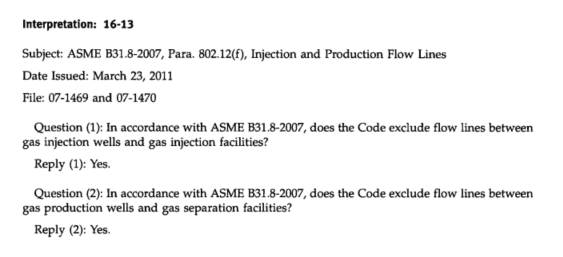Hell,
This question is for US onshore oil and gas production facilities and gathering flowlines.
For lines that are typically in the middle of nowhere, and in ranches where there are barely any houses. We use ASME B series as the governing code for our tank batteries and pipelines (31.3, 31.4, and 31.8).
In environments like that, is that a proper code to apply, most companies I know in the Shale business and onshore use those codes.
Secondly, what is the place for DOT regulations. An approach is to evaluate for DOT 49 CFR 19...applicability on a case by case bases (depending on evaluation of location) and use the ASME B31 series as the main codes to apply...Is this a good approach?
As much as possible, do it right the first time...
This question is for US onshore oil and gas production facilities and gathering flowlines.
For lines that are typically in the middle of nowhere, and in ranches where there are barely any houses. We use ASME B series as the governing code for our tank batteries and pipelines (31.3, 31.4, and 31.8).
In environments like that, is that a proper code to apply, most companies I know in the Shale business and onshore use those codes.
Secondly, what is the place for DOT regulations. An approach is to evaluate for DOT 49 CFR 19...applicability on a case by case bases (depending on evaluation of location) and use the ASME B31 series as the main codes to apply...Is this a good approach?
As much as possible, do it right the first time...

